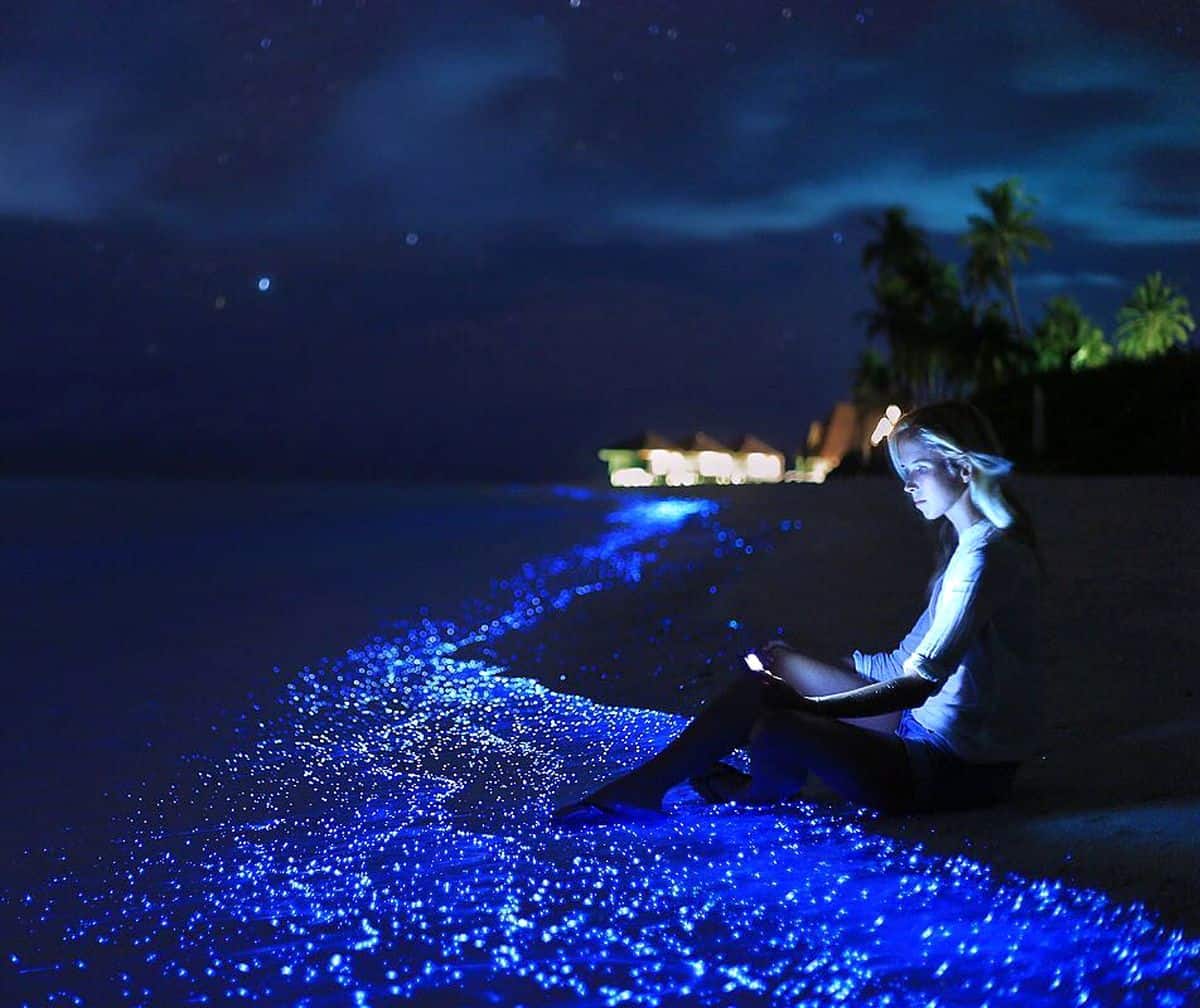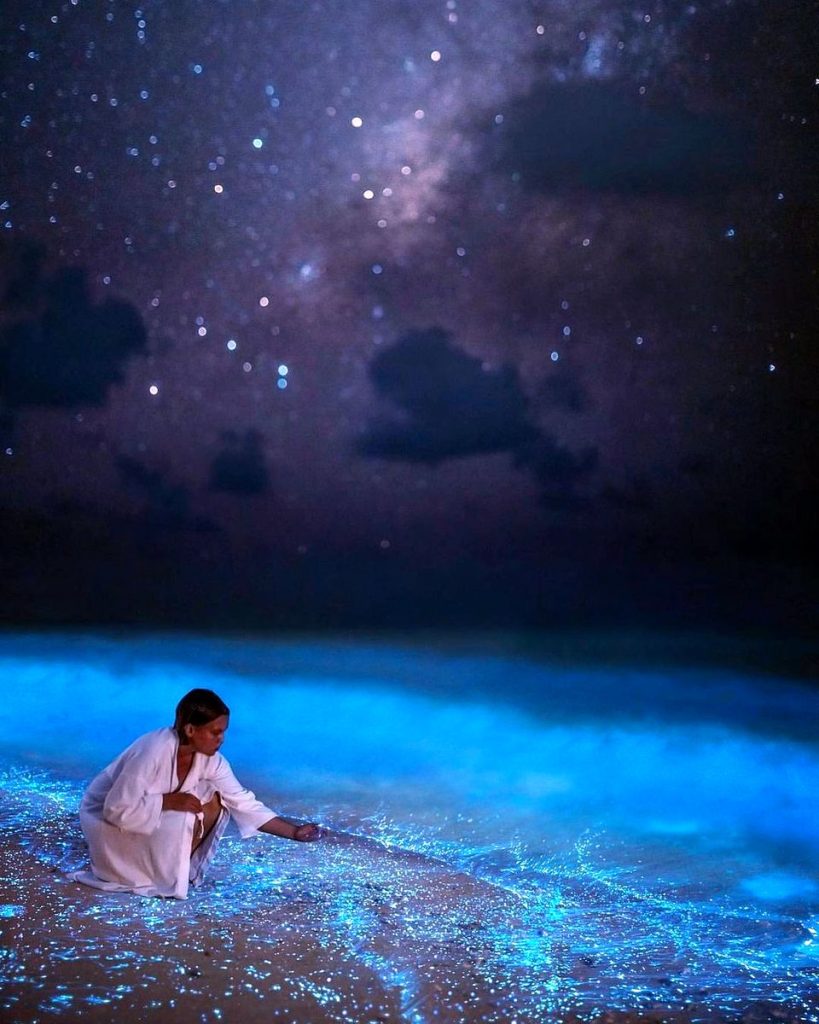Nestled away in a secluded corner of the Maldives lies what could easily be described as the most enchanting spot on the planet – an ethereal beach adorned with countless “stars” that illuminate the night naturally.
However, as twilight descends, a remarkable transformation takes place. The once ordinary waves begin to radiate a luminous, regal blue hue. The sudden shift is so mesmerizing that it feels almost surreal, yet this captivating phenomenon is grounded in simple scientific principles.
Remarkably, no human intervention has altered these waters in any way. Instead, the luminosity is attributed to a colony of microorganisms known as phytoplankton, specifically dinoflagellates. These tiny organisms possess the extraordinary ability to undergo a natural chemical reaction that emits light.
Dinoflagellates employ this luminous display as a defense mechanism against predators. Ingestion by fish triggers the reaction, causing the predators to glow, thus increasing their vulnerability to predation themselves. This mesmerizing spectacle unfolds when the water is disturbed, resulting in a shoreline adorned with radiant blue “stars” that mirror the celestial galaxies above.
The occurrence of these sea stars is entirely dependent on climatic conditions and planktonic growth throughout the year. Despite its remote location – with a mere 500 inhabitants – Vaadhoo Island is not devoid of accommodation options. Several resorts, such as the W Maldives, dot the nearby shores, offering visitors the opportunity to experience this magical phenomenon firsthand.